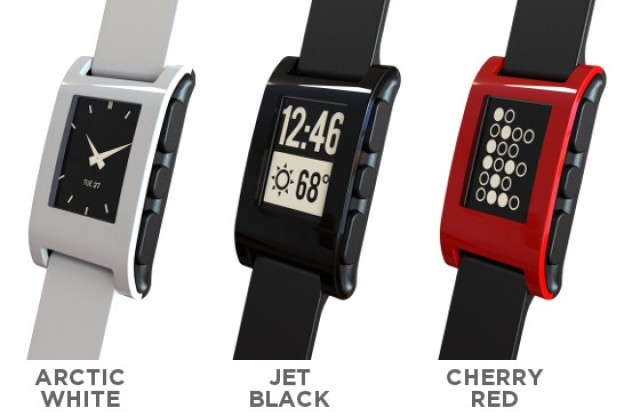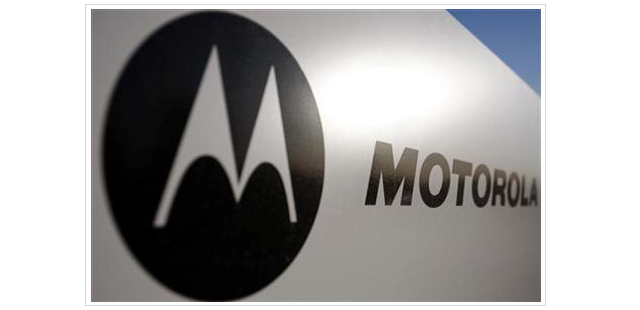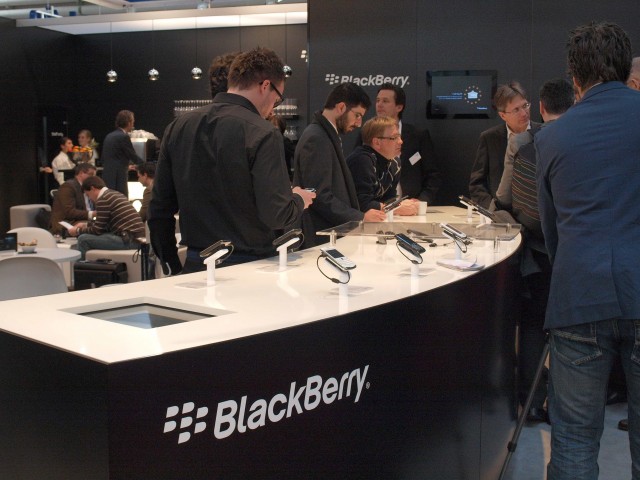I saw a jest on Twitter recently that the Onion should do a story on
the fact that WWIII has just erupted since the release of
Instagram for Android.
This is a dramatic statement to be sure, but perhaps one that we can
all appreciate given the buzz that the long-awaited application's
release has generated in the past week or so. Recently, however, there
has been even more news in the debate among the user bases of Android
and iOS. Developer Ryan Bateman of the
Papermill app
(an Instapaper client for Android) has argued that Android users are
significantly less willing to pay a premium for refined applications
than iOS users. Statements like these spark a great deal of controversy
in the Android community, and with good reason. Is there any truth
behind those words?
Developing for Android: Is it Worth It?
First, some background information to the Papermill story. Developer
Bateman created the app because the original creator of Instapaper for
iOS was thoroughly uninterested in ever creating an equivalent
application for Android users. In December of 2011, Marco Arment, the
creator of Instapaper, issued a
challenge to Android developers,
saying that if developers met certain requirements, he would sanction a
would-be application as the official Instapaper client for Android.
Ryan Bateman wanted to meet that challenge, and Papermill was born.
Over at The Verge, it was reviewed as the
first beautiful Instapaper client for Android. So, what happened?
Ryan Bateman is currently charging $3.99 USD for the Papermill app,
which also requires an Instapaper subscription (amounting to $3 for 3
months). The developer had said that he didn't think he could get away
with the price tag, and apparently he was right: as of April 4th, the
app had only sold 441 units on Google Play and 5 units in the Amazon App
Store. He claims that the reason for this is that Android users are
less willing to pay for premium apps than iOS users. His device logs
show that 40% of his sessions came from users running Android 4.0+, and
since the app is built using 4.0 design guidelines, the developer feels
that he is designing his application around a small base of users
interested in paying for quality.
As Android users, a lot of us have heard this argument before: the
Android user base is cheap. It is often said that developers flock to
iOS because its users tend to be more willing to pay for applications
and to pay higher prices for those applications. (More on some reasons
why that might be in a minute.) This argument is often made by iOS
developers uninterested and unwilling to port their (often paid)
applications that have been successful on iOS to Android. When they
finally do decide to port those applications or opt to go the way of
Marco Arment and offer a challenge to developers to create a new
application, they are often disappointed in the results. "See," they
say. "Android users are cheap, and we were better off sticking with our
iOS user base. Those customers are more willing to pay for
applications."
Form, Function, or Both?
It is often the case that those same developers do not understand the
Android user base. While their applications were sitting pretty for
months on iOS, the enterprising Android development community was
working on its own versions. For example, I took a good look at
Papermill this week and one of its main competitors, the often-cited and
highly-praised app
Readability.
Readability happens to be free on Google Play and provides exactly the
same sort of service. Furthermore, it has a native Chrome extension,
which is something that Instapaper does not possess. With Instapaper,
you need a bookmark option in your bar in order to save pages for
offline reading. With Readability, you don't need an Instapaper
subscription. The app also syncs across Android
and
iOS devices, so it is cross-platform. Even more, for those of you that
haven't had much experience with the app or had a chance to use it, the
interface is intuitive, the syncing options work well, and it's even
easy on the eyes:
Part of the problem here isn't that Android users
aren't interested in paying for quality applications. It is that they
aren't interested in paying for new applications in Google Play that do
less than applications that are already out there. How many of you
would still be willing to use Readability if you had to pay for the
application? The price of an app directly correlates to its usefulness.
I would also bet that part of what makes the Papermill pill harder to
swallow for Android users is that you not only have to pay for the
application, but you have to pay for an Instapaper subscription. Not
only is this inconvenient, since you have to do this in two different
locations, but it adds cost on top of cost for an application that
performs functions about the same (or arguably worse, if you look at
some of the reviews in Google Play) as other Android apps that already
exist.
None of this is meant to say anything against the
developer, and I hope the community will encourage him to continue
developing for the Android platform. However, the point that I hope is
coming across here is that developers cannot simply hope to port iOS
ideas onto the Android platform and then get frustrated when their apps
don't sell well. If users aren't interested in Papermill right now en
masse, it does not necessarily imply that Android users as a whole are
not interested in "paying for quality applications." The method of
purchasing and subscribing to Papermill is clunky at best, and it lacks
some key features that other applications with similar features have out
of the box. None of these things put together should necessarily make
the developer draw the rather presumptuous conclusion that Android users
are cheap.
I know most of you are perfectly willing to use your
hard-earned cash to pay for quality apps, and on this site, a lot of
those apps will be root applications. Are there room for functional
applications that are also "pretty?" Of course! The thing about Android
users, though (and power users, especially) is that they aren't willing
to sacrifice function for form. If you're planning on developing for
Android, you have to know your customers.
The Psychology Behind the Platforms
Let's return to this week's battle to the death over
the release of Instagram. The battle between iOS users and Android
users has gotten increasingly hostile over the past few days, where many
(on both sides) have taken to Twitter to complain. Many iOS users are
irritated by Instagram's new users and concerned about the potential
quality of the social network. Of course, it is true that Android
hardware is extremely diluted and that picture quality will likely vary
greatly, but the reverse of that is that Instagram is usable on iOS back
to the 3GS, which is certainly not known for its high-quality
photography. Android users, on the other hand, often think of iOS users
as dumbed-down "hipsters" and have been known to look upon ported iOS
apps with particular disdain. Instagram has been no exception. This
week, there was an article published on
Buzzfeed
by Matt Buchanan that explains some key differences between Android
users and iOS users. Citing different reports and surveys, the author
explains the rather large demographic gap between Android users and iOS
users. According to a
Hunch survey
(when taking this survey into account, it must be considered that those
who participated had to actively sign up for Hunch) Android users are
80 percent more likely to only have a high school degree, 86 percent
more likely to live in a rural area, 20 percent more likely to be
politically conservative, 57 percent more likely to "prefer an ugly
device that's full-featured" and 71 percent more likely to have never
left their native country. iOS users are 37 percent more likely to have
a graduate degree, 27 percent more likely to live in the city, 17
percent more likely to be politically liberal, 122 percent more likely
to "prefer a sleek device that does just a few things," more likely to
be upper-middle-class, and 50 percent more likely to have visited more
than five countries.
Before we all get too up in arms over this, it might
be relevant to consider how this relates to the earlier discussion
regarding developing for Android. First of all, it makes sense that the
Android demographic would be significantly more spread out than the
iPhone demographic. There is a lot more Android hardware on the market,
from inexpensive, prepaid devices all the way on up to top of the line,
flagship devices that are actually more expensive than the iPhone out
of the box. This makes for a wide range of users, and in the defense of
developers thinking of moving to Android, it does present a significant
challenge. As Papermill developer Bateman had suggested, there were
only a small amount of devices using Android 4.0+ that were interested
in his design aesthetic. One thing for developers to look at, though,
is that if Android users are coming from all sorts of different economic
backgrounds, is a pretty, iPhone-esque Instapaper app that requires a
separate subscription necessarily the best way for you to net income?
Furthermore, should you blame the consumers when revenue isn't what you
had hoped? Again, it's important to know and understand your audience
and their interests.
The fact that the Android user base has a more
diverse demographic economically doesn't necessarily make them cheap,
but I would argue it does make them a more discerning and complex
audience. Developers can't merely expect to port over iPhone
applications and design ideas and expect them to take root and sell well
in a community as diverse as this. There are a lot of different people
in the Android community buying applications, and consumers are
diluted. In that respect, Android is more of a challenge to develop for
than iOS, which is arguably more homogeneous. It goes without saying
that most of you are offended when you hear that Android users are less
willing to pay for quality applications, and with good reason. That
superficial statement only scratches the very surface of a controversial
argument.














































